cellular agriculture
What is Cellular Agriculture
Cellular agriculture is the production of agricultural products from cell cultures, without animals, using a combination of:
- Biotechnology
- Tissue Engineering
- Molecular Biology
- Synthetic Biology
to create and design new methods of producing proteins, fats, and tissues that would otherwise come from traditional agriculture. The majority of the sector is centered on animal products such as meat, milk, and eggs generated in cell culture rather than rearing and slaughtering farmed livestock. Cell-cultured meat is the most well-known application of cellular agriculture.
Cultivated Meat
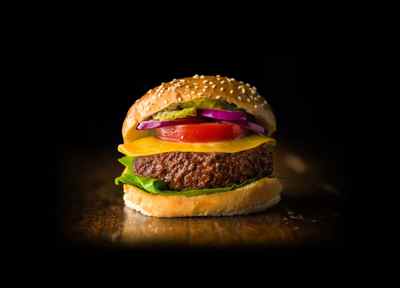
Meat is essentially composed of muscle and fat cells. In essence, if we can acquire those two types of cells and then help them grow we can recreate meat! This concept was first presented to the world by Dr. Mark Most in 2013, where he made an entire beef burger out of cultivated muscle cells.
Image credit: Mosa Meat
Attempts have been made not only for beef burgers but also sausages, steaks, chicken nuggets and seafood.
Right now it is possible to even taste cultivated chicken nuggets in Singapore (first allowed in December 2020, see image below) and in USA, after the USDA approval granted to Good Meat and Upside Foods in June, 2023: Good Meat(division of Eat Just), Upside Foods
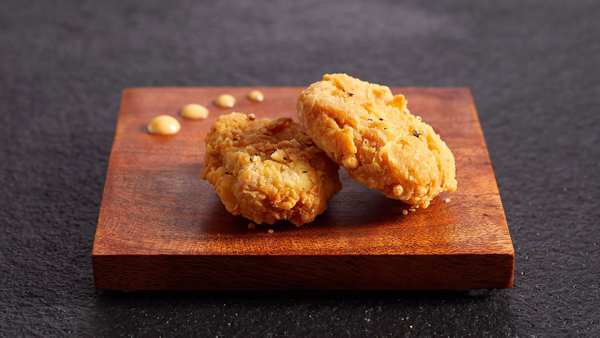
how does it work?

Cell isolation
First, we need to take a small painless, muscle biopsy from an animal to isolate the cells. This is the only part of the process where the animal is needed.
Cultivate the cells
Then we place these cells in an environment very similar to the animal's body, tricking them into thinking they are still inside the animal and helping them grow and proliferate. Very similar to the way that is used to make beer!
differentiation of cells
The cells then grow into food scale bioreactors and we train them to have the desired characteristics to function properly depending on each cell category.
cell harvest
Finally, the cells can be collected and assembled into the familiar patty or create other types of meat. The taste and the texture will still be there, just as the cow or any other animal product you desire to produce!
Cellular Agriculture Applications
While the majority of research has been around food applications, particular cultivated meat, cellular agriculture can be used to create any kind of agricultural product, including those that never involved animals to begin with! Applications include: Meat, Dairy, Seafood, Leather, Silk, Fur, Pet Food, Fragrances, Gelatin, Coffee, Animal derived proteins, Enzymes, Functional ingredients, Nutraceuticals and many more!
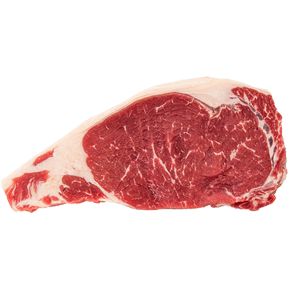


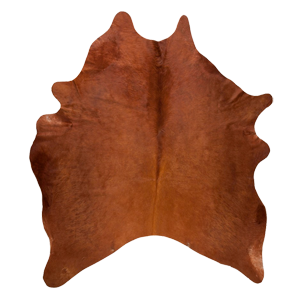





Sustainability
Meeting our own needs without compromising the ability of future generations to meet their own needs.
FAQ
Most frequent questions and answers regarding Cellular Agriculture
Cultivated meat requires a few things before it will be widely available – firstly, it must be able to be produced and sold at a reasonable cost, and secondly, it requires regulatory approval to ensure it can be safely manufactured and delivered from producer to consumer. For Greece and the rest of the EU, the approval process for new foods to be sold in the single market begins with the European Commission, or by submitting an application to the Commission. The regulatory body responsible is the European Food Safety Authority (EFSA).
Regulatory approval has not yet been granted outside of Singapore (which recently approved the sale of cultivated meat in restaurants), but other countries like Israel, Australia, Qatar, as well as the USA, are aware of the field of cellular agriculture and anticipate working with companies to approve products.
Any product or ingredient that comes from an animal can be produced using cellular agriculture.
- Food: meat, eggs, dairy, gelatin, pet food, coffee
- Biomaterials: leather, silk, fur
- Cosmetics and supplements: collagen, fragrances
The technology is being researched in depth and a lot of research is happening right now so that it can gradually move from lab scale to production at scale, which will eventually bring many new products to market.
Eggs and dairy milk are currently being produced through precision fermentation (acellular agriculture). These ‘acellular’ products (i.e. they don’t contain cells) are mostly made of water, proteins, fats, and small amounts of carbohydrates, vitamins and minerals.
For example, cow’s milk is made up of proteins (like casein and whey proteins) and fats (like triglycerides and phospholipids), among other macromolecules. We can take the cow genes that code for these specific proteins and fats, and insert those genes into yeast cells (this is called recombinant gene technology). Those yeast cells then become tiny micro-factories that develop the exact dairy proteins and fats produced by the cow. This process eliminates the need to raise and milk cows for dairy production.
The recombinant DNA technology isn’t new. It has already been applied in the food and pharmaceutical industries. Rennet, a set of enzymes traditionally extracted from calves’ stomachs, is used in cheesemaking. Today, precision fermentation, or acellular agriculture, is used to produce rennet more efficiently, cheaply and humanely.
The same process is used to create medical-grade, biocompatible insulin for diabetic patients. Instead of harvesting thousands of pancreases from animals to extract insulin, the pharmaceutical industry uses genetically modified yeast cells to create human insulin.
For Greece and the rest of the EU, the approval process for new foods to be sold in the single market begins with the European Commission, or by submitting an application to the Commission. The regulatory body responsible is the European Food Safety Authority (EFSA).
Not yet. But a few Greeks living abroad are already part of the global cell ag ecosystem, working in various positions. Meanwhile, within the Greek borders, many people have the background needed to work in the new highly interdisciplinary field that is cellular agriculture, and they could potentially contribute with their knowledge and skills.
A central goal of Cell Ag Greece is to bring as many interested people as possible to the table, so that a productive discussion can start on what is possible. We are positive that the answer is “plenty”.
Cellular agriculture products are natural – they’re made of the exact same muscle, fat, and connective tissues as their conventional, farmed and wild caught counterparts. As with all innovations in agriculture, cellular agriculture harnesses modern knowledge and technology to produce the food we know and love more efficiently. Unlike industrialised animal agriculture, cellular agriculture can produce food and biomaterials without negatively impacting our planet, human health, or animals.
Cultivated meat will taste just like real meat, because it is real meat. One of the first to try cultivated chicken from Eat Just, served in the restaurant 1880 in Singapore said last December “This chicken, it’s just chicken, but it’s the most amazing thing I’ve ever seen or ever tasted.”
Meat is primarily made of muscle, fat, and blood cells, organized in a scaffold of structural proteins, whether it’s conventional meat or cultivated meat. The major difference is the way in which the meat is produced.
One of the many benefits of cellular agriculture is that there is complete control over the final composition of muscle, fats, and connective tissue – meaning producers can produce meat that tastes just as good (or better!) than farmed meat.
Yes, cultivated meat will go through the same food safety regulatory process (by EFSA) as any other food produced in Greece and the EU. Singaporean food regulators have already shown their confidence in the safety of cultivated meat, having approved Eat Just’s cultivated chicken for sale in December 2020, the first approval globally.
Prior to regulatory approval, many developers of cultivated meat have shown their confidence in the safety of their products by tasting them at demonstration events (like Mosa Meat and Upside Foods).
Cultivated meat does not require any added antibiotics as used in raising livestock. This is because cultivated meat can be produced in facilities that comply with strict industry standards, unlike farmed animals, which are vulnerable to infectious diseases from birth to death.
Cultivated meat will be free of any added growth hormones that are typically used in the livestock industry to unnaturally increase the size of animals. Rather, cultivated meat will be produced by culturing the animal cells found in meat using a nutrient-rich broth (called cell culture media) containing growth factors (molecules that tell the cells what to do).
Since we have complete control over all the nutrients that go into cellular agriculture products, we can customize our food to suit our preferences.
Cellular agriculture provides us with the flexibility to make meat and seafood as healthy and delicious as we want. We can reduce the number of unsaturated fats (or increase the amount of healthy fats) and increase the amount of proteins, vitamins and minerals, without sacrificing the taste or texture of our food. This flexibility means the health and taste properties of cellular agriculture products will be up to consumers’ preferences.
Cultivated meat and other cellular agriculture products (such as egg and dairy) will have similar packaging, storage and handling requirements as conventional animal products.
To produce cellular agriculture products (like meat and seafood), producers do not need to use genetic modification, but some may as it can safely increase the nutritional and taste profile of the food. For consumers who don’t want their products to be genetically modified, several companies have committed to not using GM methods such as Mirai Foods and Mosa Meat. Moreover, under current regulation, GMOs are banned from the EU single market.
For products made through acellular agriculture, such as dairy and eggs, companies use precision fermentation (a form of genetic modification) to produce specific proteins and fats; these end products are free of any of the modified genetic material (DNA).
It is currently unclear what cultivated/cell-based/cultured meat will be called once it hits supermarket shelves. As for Greek, all related terminology found in the literature is yet untranslated, and even we, as Cell Ag Greece, haven’t found translations we would consider final. In the English-speaking world, ‘cultivated meat’ and ‘cell-based seafood’ are terms currently widely accepted within the industry. However, this may change as more market research is undertaken.
Cellular agriculture is a field that is broad in scope. It needs engineers to help design the manufacturing facilities, and farmers to breed the perfect animals to provide cells for expansion and to grow the crops for media production. It will also need technicians to run the facilities, marketers to build consumer relations, and of course, scientists to perform research and leverage that knowledge within companies to design and improve products.
For more information, check out ‘Pathways into Cell Ag’ an online tool developed by Cell Ag Australia.
That’s great – you’re in the right place! First of all, don’t hesitate to reach out to us.
Cellular agriculturalists have diverse expertise, drawing from backgrounds such as stem cell scientists, biotechnologists, bioprocess engineers, automation engineers, industrial pharmacists, food scientists, and packaging technologists. For more information, check out ‘Pathways into Cell Ag’ the online tool developed by Cell Ag Australia.
Professionals from non-STEM backgrounds such as chefs, designers, research and media communicators, marketing campaigners, and food retail chains will also have a crucial role to play in consumer education, marketing, supply-chain and distribution to bring cellular agriculture products to consumers.
Cultivated meat is made from animal cells just like conventionally farmed meat, whereas plant-based meat is made from plants.
Plant-based meats (such as the products of Beyond Meat and Impossible) are great products for replacing farmed meat but are made primarily with plants processed to taste like meat. Cultivated meat is meat on a fundamental level, as it is composed of animal cells just like farmed meat.
In the future of food, both will have a place as excellent sources of protein and other important nutrients, with different appeals to different consumers.
Many life cycle assessment (LCA) studies have been done to estimate the resource use and waste production for cultivated meat, but there are not yet studies for cellular agriculture products other than meat. At present, these studies are only the best guess for likely production parameters (Scharf et al, 2019).
A recent review of LCAs (Scharf et al, 2019) found that, compared with standard U.S. beef production practices, cultivated meat could reduce:
- land use by >95%
- greenhouse gas emissions by 74-87%
- nutrient pollution by 94%
How cellular agriculture products will compare to traditional methods in energy and water use is currently less certain. The driving motivation behind many cellular agriculture companies is to make animal products more sustainable, so it is expected there’ll be a constant effort to improve sustainability practices and production efficiency.
Santo (2020) provides a graphical summary of many LCAs of cellular agriculture products compared to conventional for water use, greenhouse gas emission and land use.
Cultivated meat is technically not vegan according to the Vegan Society, as it involves the use of an animal product – however, changes to the definition may occur once the technology matures.
Cultivated meat can be halal if the source of the cells comes from an animal slaughtered in a halal manner (Hamdan, 2018).
The opinion is divided on what conditions need to be met for cultivated meat to be Kosher, with some rabbis arguing that the cell source must be from a ritually-slaughtered (shekhted) animal (Rabbi Menachem Genack, CEO of the Orthodox Union’s Kosher Division). Others claim that the product is so far removed from the source that it cannot be considered forbidden (Rabbi Yuval Cherlow, Director of Tzohar’s Jewish Ethics Center in Israel). Extrapolating this argument, cultivated pork and other traditionally non-kosher foods could be kosher!
Some cultivated meat companies may pursue a strategy wherein they periodically harvest cells from a living animal via a harmless biopsy, and isolate the stem cells for expansion, thus requiring some upkeep of animals. However, given the importance of animal welfare within cultivated meat companies, these animals are much more likely to be kept in high welfare conditions.
Other cultivated meat companies such as Shiok and Upside Foods have asserted that they plan to make their cells indefinitely self-renewing, or ‘immortalized’, meaning that they won’t have to go back to the same animal source to harvest cells.
Language is always evolving as new circumstances arise, which can change the meaning of words. When soy milks arrived on the market, consumers weren’t confused about whether soy plants had mammary glands, and with veggie burgers, consumers adapted to burgers meaning the shape and use of the food, and not what it was made of. Cultivated meat is meat down to the level of DNA, and to call it anything else would be deceptive.
Cellular agriculture is a versatile technology for producing food, allowing customization of the product like how much fat the meat or milk will have, which will give consumers more choice. Some companies such as the Shojinmeat Project and Future Meat are aiming for a future where cellular agriculture is democratised: consumers will be able to produce their own food and customise it themselves.
Since cultivated meat isn’t yet available (except in Singapore), acceptance may shift once-influential factors such as taste, price and popularity are accounted for (Bryant and Barnett, 2018).
Research on consumer acceptance of cellular agriculture products shows mixed results – interest and acceptance seems to be highly dependent on the description of the cultivated meat and the phrasing of the question asked of participants, as well as whether the sample was representative of the population (Bryant and Barnett, 2018)
- Scharf, A., Breitmayer, E. and Carus, M. Review and gap-analysis of LCA-studies of cultured meat for The Good Food Institute, 2019.
- Santo, R., Kim, B., Goldman, S., Dutkiewicz, J. Biehl, E., Bloem, M., Neff, R. and Nachman, K. Considering Plant-Based Meat Substitutes and Cell-Based Meats: A Public Health and Food Systems Perspective, 2020
- Bryant, C. and Barnett, J. Consumer acceptance of cultured meat: A systematic review, 2018
- Hamdan, M., Post, M., Ramli, M. and Mustafa, A. Cultured meat in Islamic perspective, 2018
timeline of cellular agriculture
Discover the History of Cellular Agriculture

In 1885, Wilhelm Roux successfully kept embryonic chicken cells in a saline solution for several days, thereby establishing the principle of tissue culture (source).

Professor Pierre-Eugène-Marcellin Berthelot was one of the most famous chemists in the world. The professor predicted, by the year 2000 human beings would no longer need farm, field, and range because they would manufacture their food rather than rely on “natural growth” (source)

French biologist Alexis Carrel keeps a piece of chick heart muscle alive in a Petri dish, demonstrating the possibility of keeping muscle tissue alive outside of the body (source)

Frederick Edwin Smith predicts that "“It will no longer be necessary to go to the extravagant length of rearing a bullock in order to eat its steak. From one 'parent' steak of choice tenderness it will be possible to grow as large and as juicy a steak as can be desired" (source)

Former Prime Minister of the United Kingdom Winston Churchill writes "Fifty years hence we shall escape the absurdity of growing a whole chicken in order to eat the breast or wing by growing these parts separately under a suitable medium" (source)

Willem van Eelen recognizes the possibility of generating meat from tissue culture. He is widely recognized as the "godfather of cultured meat" (source)

American professor Russell Ross achieves the in vitro cultivation of muscular fibers. Title of his published study: THE SMOOTH MUSCLE CELL: II. Growth of Smooth Muscle in Culture and Formation of Elastic Fibers

The cultivated meat idea became more widely recognized in pop art when Commander Riker revealed to an alien on Star Trek: The Next Generation that the meat humans consume on the USS Enterprise was grown rather than slaughtered and no animals were enslaved for food purposes (video source)

NASA-funded experiments have succeeded in culturing turkey muscle cells as a potential way to feed astronauts on long space missions (source)

Researchers (Benjamison, Gilchriest, Lorenz) culture muscle tissue of the common goldfish in Petri dishes and publish their study in Acta Astronautica. The meat was judged by a test-panel to be acceptable as food (source)

Researcher Jason Matheny founds New Harvest, the first non-profit to work for the development of cultured meat (source)

Oron Catts and Ionat Zurr of the Tissue Culture and Art Project and Harvard Medical School produce an edible steak from frog stem cells (source)

Dutch government agency SenterNovem begins funding cultured meat research from 2005 to 2009. This research programme laid the foundations for the creation of the first cultured burger, in 2013 (source)

In a paper in the June 29 issue of Tissue Engineering, a team of scientists, including University of Maryland doctoral student Jason Matheny, propose two new techniques of tissue engineering for the production of in vitro meat (source)

The In Vitro Meat Consortium, a group formed by international researchers, held the first international conference on the matter, hosted by the Food Research Institute of Norway in April 2008 (source)

People for the Ethical Treatment of Animals offers a $1 million prize to the first group to make a commercially viable lab-grown chicken by 2012 (source)

Co-founded in 2011 by Andras Forgacs, Gabor Forgacs, Francoise Marga, and Karoly Jakab, Singularity University’s Modern Meadow is using a technology called tissue engineering to grow leather and meat from the confines of a laboratory — no animals harmed in the making (source)

The first cultured hamburger, developed by Dutch researcher Mark Post's lab, is taste-tested in London, live on BBC. Sergey Brin, the co-founder of Google, has been revealed as the project's mystery backer. New Harvest directed Sergey Brin’s family foundation to Mark Post. Total research funding: $330,000 (source).
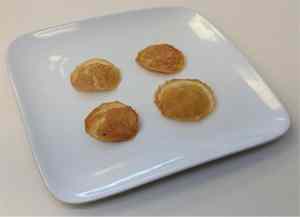
Modern Meadow presents "steak chips", discs of lab-grown meat that could be produced at a relatively low cost (source)

The Modern Agriculture Foundation, which focuses on developing cultured chicken meat (as chickens make up the large majority of land animals killed for food, source), is founded in Israel (source)

New Crop Capital, a private venture capital fund investing in alternatives to animal agriculture - including cellular agriculture - is founded. (source)

The Good Food Institute, an organization devoted to promoting alternatives to animal food products - including cellular agriculture - is founded (source)
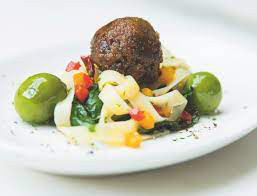
Memphis Meats (is now named Upside Foods) a San Francisco startup devoted to creating lab-grown meat from animal cells, released a video on Tuesday showing the “world’s first cultured meatball” getting fried up in a pan (source)

New Harvest hosted New Harvest 2016: Experience Cellular Agriculture, the first-ever global cellular agriculture conference (source)

Paul Shapiro's book Clean Meat: How Growing Meat Without Animals Will Revolutionize Dinner and the World, is the first book to explore the work of start-ups that are growing real animal products without animals. The book was placed on The Washington Post's bestseller list (source)

Upside Foods received a US$161 million investment in its Series B, which is more than everything that had been invested in the industry so far which was US$155 million (source)

Cultivated chicken made by U.S. start-up GOOD Meat, a division of Eat Just will make its historic debut at restaurant 1880 in Singapore, after the country’s food agency approved the sale of cultured meat. Josh Tetrick, who founded Eat Just in 2011, says the company started developing cultured chicken using animal cells in 2016 (source)

Singapore contract development and manufacturing organization (CDMO) Esco Aster has received approval from the SFA to manufacture cultured meat. The approval was granted on July 28, 2021 for the firm’s AsterMavors platform to cultivate meat in bioreactors, directly from animal cells after undergoing SFA safety assessment reviews (source)

JBS, the world’s biggest meat processor, is now pivoting its business towards alternative proteins with its first foray into the cell-based meat space. It has announced plans to acquire BioTech Foods, the Spanish startup behind cell-cultured Ethicameat, as well as build a new R&D site dedicated to cultivated protein in Brazil (source)

leph Farms is taking food tech and nutrition to another level – literally. The Israeli cultured meat start-up’s bold new frontier involves accelerating extraterrestrial food production, a primary barrier for long-term space missions, to one day nourish space travelers as they journey to Mars and the Moon (source).

Upside Foods Unveils EPIC – a $50M Cultivated Meat Engineering, Production & Innovation Center containing custom-made, patented cultivators to produce over 50,000 pounds of cultivated meat, with a future capacity of over 400,000 pounds per year, and offering the public the opportunity to see how cultivated meat is produced (source)

Shiok Meats, the first company in the world to develop cultivated crustacean products, has officially opened a “mini-plant” at its headquarters in Singapore. To design and construct the plant, Shiok partnered with sustainable infrastructure solutions company Black & Veatch and FoodNet International Holdings (source).

Future Meat uses proprietary technology to produce cultivated meat. The technology is based on the rapid natural proliferation of connective tissue cells growing in stainless steel fermenters that continuously remove waste products to maintain a constant physiological environment. Future Meat said it is now producing cultivated chicken breast for $7.70 per lb (source)

The Chinese Ministry of Agriculture and Rural Affairs has just released its official Five-Year Agricultural Plan, which for the first time specifically mentions cultivated meat. The report describes how innovation could be boosted in “frontier and cross-disciplinary technologies,” a category that includes cultivated meat. (source)

Cell-cultivated meat companies Good Meat and Upside Foods received approval from the FDA for their chicken grown from animal cells. This is the first regulatory approval for any cultivated meat in the U.S. The “no questions” letters from the FDA indicates regulators have found nothing unsafe about the cultured chicken the company makes. (source1, source2)

